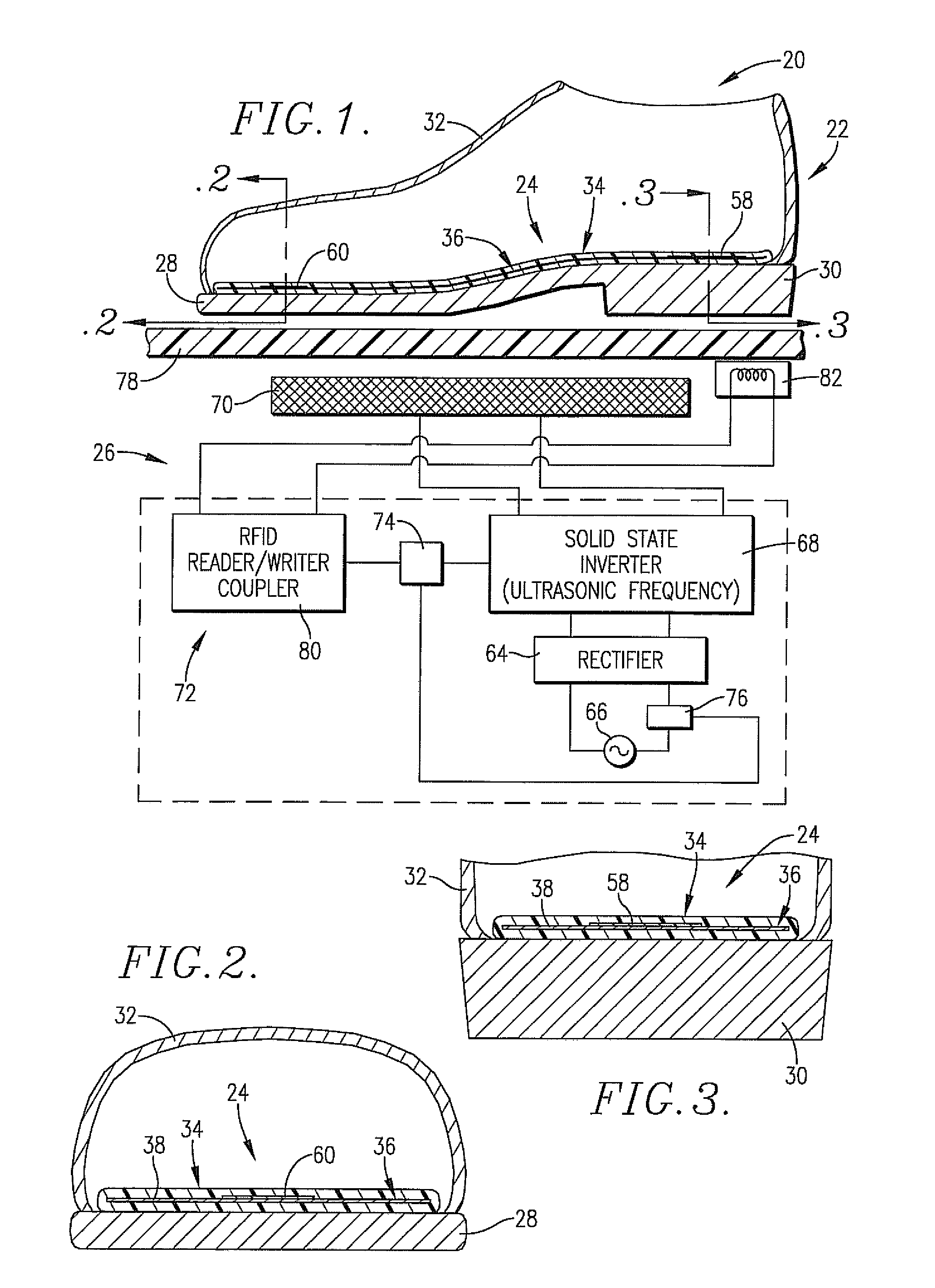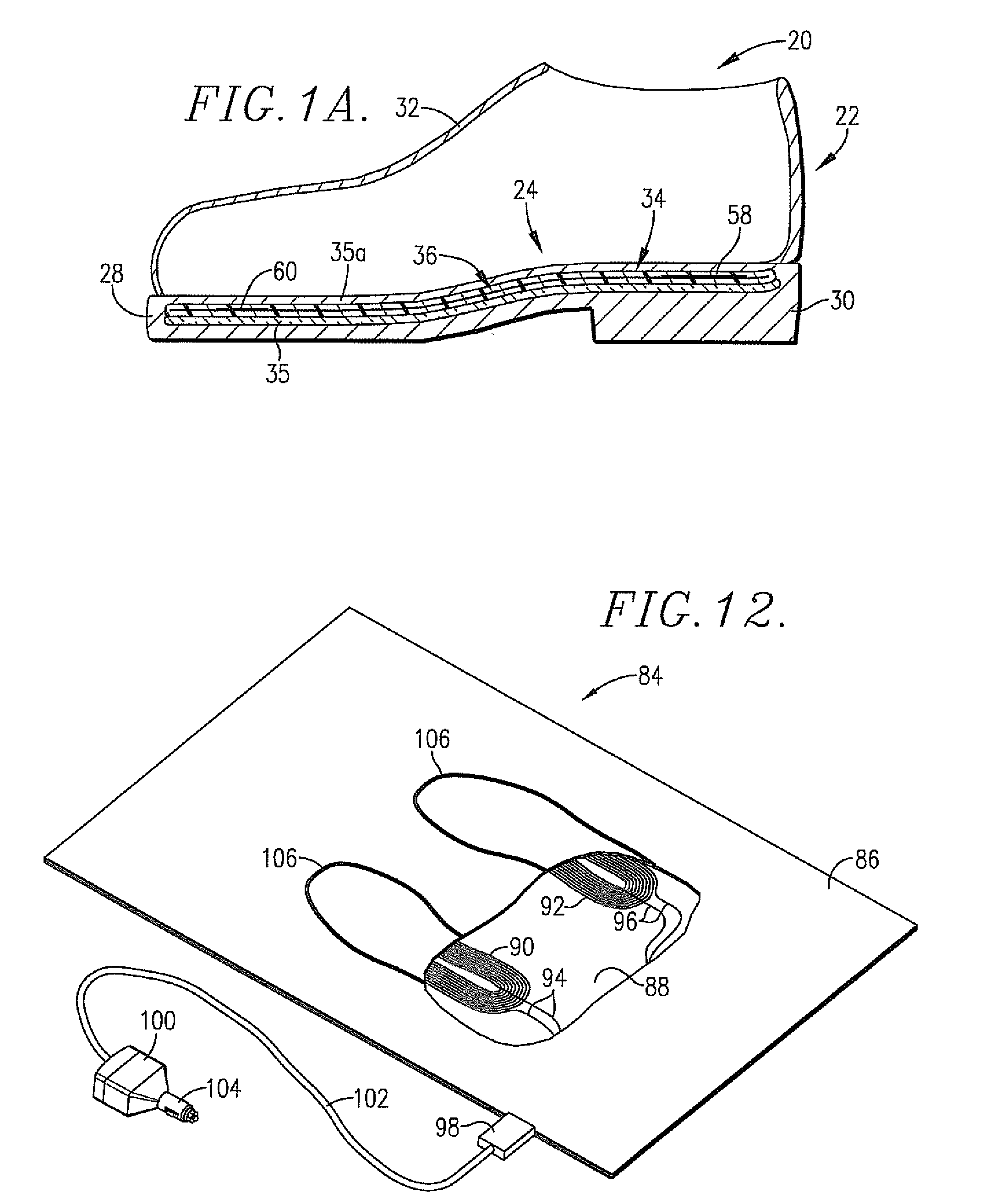Inductively heated clothing
a technology of inductive heating and clothing, applied in the field of clothing items, can solve the problems of difficult laundering, difficult positioning of heating packs, and bulky batteries, and achieve the effect of improving resistance-heated clothing items and battery-powered
- Summary
- Abstract
- Description
- Claims
- Application Information
AI Technical Summary
Benefits of technology
Problems solved by technology
Method used
Image
Examples
Embodiment Construction
[0028]Turning now to the drawings, an induction footwear assembly 20 is illustrated in FIGS. 1, 1A, 2, and 3 and broadly includes a shoe 22 equipped with an induction heatable insole insert 24, as well as an induction heater 26. As shown, the shoe 22 is positioned atop heater 26 in an orientation for induction heating of the insert 24 as will be described.
[0029]The shoe 22 in FIG. 1 is itself entirely conventional and includes a sole 28, heel 30, and upper 32. An insert 24 is placed within the shoe and can be removed. The shoe 22 in FIG. 1A uses conventional construction but has the insert 24 molded into the sole 28 and / or heel 30. A layer of thermal insulation 35 such as aerogel manufactured by companies such as Aspen Aerogel is provided below the insert 24. The insert 24 is fully encapsulated in the sole 28 and / or heel 30 by a layer 35a. Alternatively, the top of insert 24 may be covered by a separate cover layer 35a which is formed of polymer-based materials, leather, or other ma...
PUM
 Login to View More
Login to View More Abstract
Description
Claims
Application Information
 Login to View More
Login to View More - R&D
- Intellectual Property
- Life Sciences
- Materials
- Tech Scout
- Unparalleled Data Quality
- Higher Quality Content
- 60% Fewer Hallucinations
Browse by: Latest US Patents, China's latest patents, Technical Efficacy Thesaurus, Application Domain, Technology Topic, Popular Technical Reports.
© 2025 PatSnap. All rights reserved.Legal|Privacy policy|Modern Slavery Act Transparency Statement|Sitemap|About US| Contact US: help@patsnap.com



